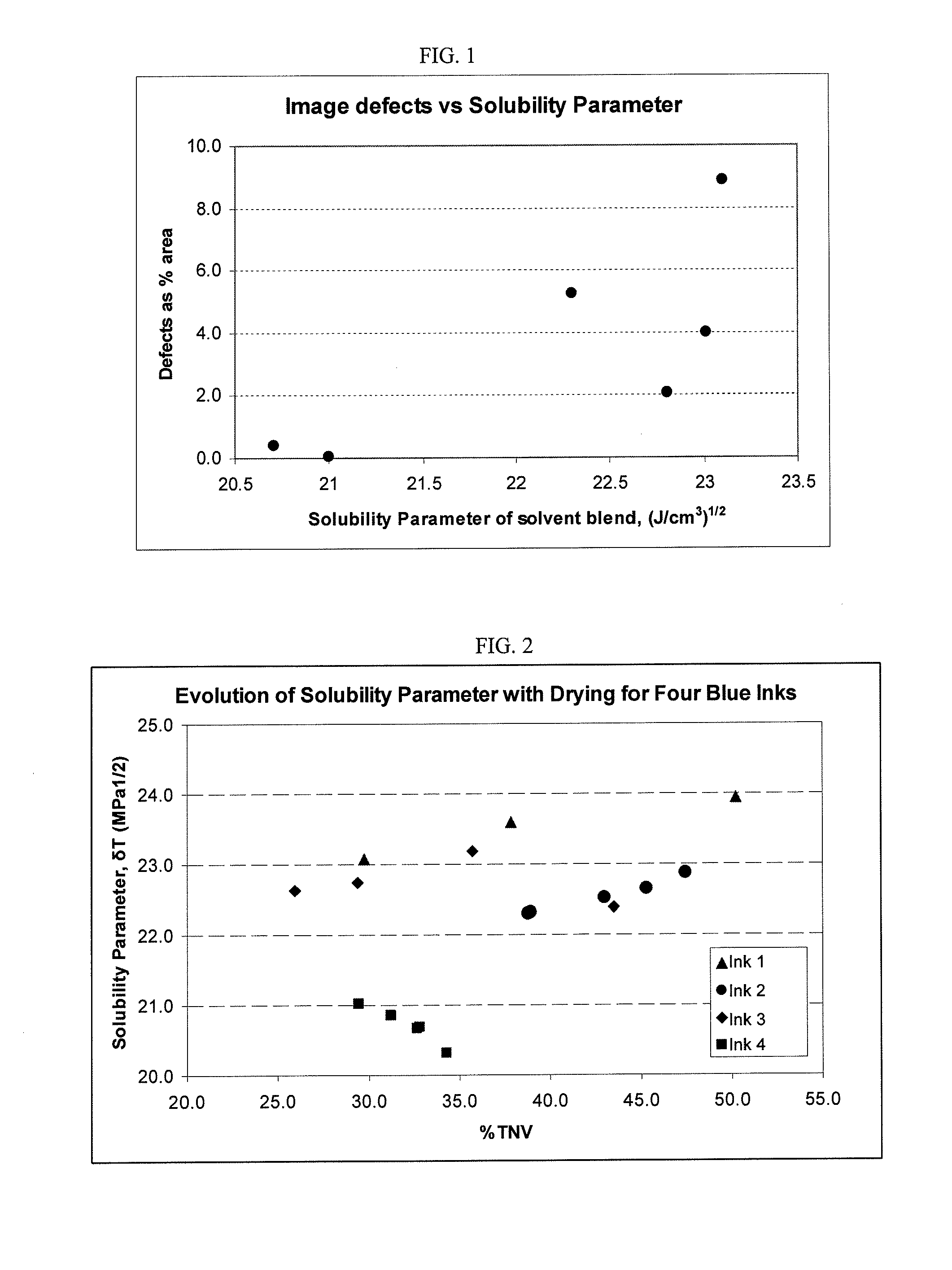High speed printing ink
a printing ink and high-speed technology, applied in the field of solvency, can solve the problems of negative impact on productivity, print defects, and inability of the ink to wet out the surface of the printing blanket or plate or the substrate, and achieve the effects of reducing print quality, high print quality, and desirable solubility parameters
- Summary
- Abstract
- Description
- Claims
- Application Information
AI Technical Summary
Benefits of technology
Problems solved by technology
Method used
Image
Examples
example 1
[0049]In one example, several formulations of a blue flexographic ink were formulated with variations of resins and solvent blends in which the solubility parameter was changed. The best printability at the highest speeds were obtained for formulations where the resins had an estimate weighted solubility parameter average of 20.6 (J / cm3)1 / 2 or less, and the solvent blend had an overall solubility parameter of 21.0 or less. The change of solubility parameter of the resins and the solvent blend of the virgin inks resulted in a marked improvement in the high speed printability on an F & K ten-color flexographic CI wide web printing press.
[0050]One preferred formulation is an ink containing a blend of resins which includes nitrocellulose, rosin ester, and polyamide and a solvent blend that has an average weighted (i.e., taking concentration into consideration) solubility parameter value of 23.1 (J / cm3)1 / 2 for the resins, and a total solubility parameter of 23.0 (J / cm3)1 / 2 for the solven...
example 2
[0054]In Example 2, a blue flexographic ink was formulated based on polyamide and rosin esters so that the estimated average weighted solubility parameter of the resins was 20.6 (J / cm3)1 / 2 and the solvent blend had a total solubility parameter of 23.0 (J / cm3)1 / 2. The printed solid area had a defect area of 3.97% when printed at a linear speed of 1700 ft / min (ca 0.52 km / min). This ink was free of defects at speeds up to 1200 ft / min (ca 0.37 km / min).
[0055]The improved ink was reformulated so that the solvent blend had a total solubility parameter of 20.7 (J / cm3)1 / 2, and at a linear printing speed of 1700 to 2000 ft / min the printed solid area had a defect area of only 0.41%. The limitation was the tension control of the press; defects were not observed at the maximum speed allowable by the conditions of the press.
PUM
| Property | Measurement | Unit |
|---|---|---|
| Pressure | aaaaa | aaaaa |
| Pressure | aaaaa | aaaaa |
| Pressure | aaaaa | aaaaa |
Abstract
Description
Claims
Application Information
 Login to View More
Login to View More - R&D
- Intellectual Property
- Life Sciences
- Materials
- Tech Scout
- Unparalleled Data Quality
- Higher Quality Content
- 60% Fewer Hallucinations
Browse by: Latest US Patents, China's latest patents, Technical Efficacy Thesaurus, Application Domain, Technology Topic, Popular Technical Reports.
© 2025 PatSnap. All rights reserved.Legal|Privacy policy|Modern Slavery Act Transparency Statement|Sitemap|About US| Contact US: help@patsnap.com

